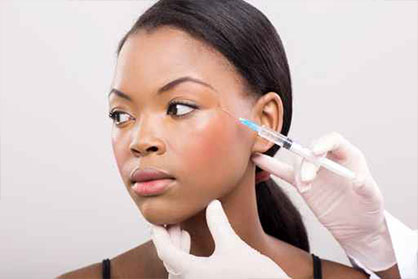
There was once a time when, if you were a woman, you had two choices when it came to the signs of aging. You could turn on the glamour and hide those pesky crow’s feet and frown lines behind bangs and a classic pair of Jackie O’s. Alternatively, you could accept your fate and pray that Oil of Olay would at the very least keep wrinkles from multiplying at the speed of light.
Today, the choices available to women are endless. Lipsticks promise to firm and plump. The array of miracle creams available is overwhelming, all of them advocated no less by celebrities who seem to defy the laws of basic biology. But let’s not forget the biggest miracle cure of all, for those who feel a bit queasy stepping under the knife: Botox. Even America’s golden girl, Gwyneth Paltrow, has admitted to trying it once. Of course, it’s not for everyone. Once was enough for Paltrow as she told fans afterwards, “I looked like Joan Rivers!”
But whether or not you are a self-confessed Botox beauty, new medical discoveries might change what you thought you knew about this age-defying treatment. While the drug form of botulinum toxin (what we call Botox) is best known for its effect on wrinkles, it is now being used for a variety of eye problems as well.

Because of the effect of the botulinum toxin in paralyzing – or relaxing – overly tight muscles, researchers found that they could inject it into the stronger eye muscle, thus giving the weaker one a chance to regain strength. This is not a permanent solution, however. After a few months, the toxin no longer takes effect on the muscle and another shot is required to continue the treatment.
In the case of children, the young brain learns far quicker to use both eyes together once a muscle has been weakened and the effects can continue even after the Botox has worn off. For child and adult alike, then, access to this treatment can be life-altering. Keep in mind, though, that long-term usage of Botox may result in various allergic reactions in some patients, and a doctor should be consulted immediately in the instance of such.
So the next time your friend pins back those bangs and challenges you to spot a frown line, thank her for her contribution to modern medicine. By dipping into the Fountain of Youth, she has reminded medical researchers that there is so much more to Botox than meets the eye.
Date Published: 07 August 2015